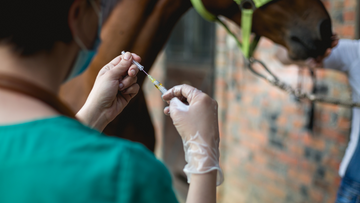Blog

Feeding a Show Heifer
Raising a competitive show heifer takes more than just good genetics and steady training. Feeding...
Read more
Natural Remedies for Canine UTIs
If your dog suddenly needs more walks, has accidents in the house, or seems uncomfortable...
Read more
What is a Cold Back Horse?
A cold back horse often shows discomfort when pressure is applied to its back, particularly...
Read more
The Benefits of Bentonite Clay for Dogs
We all want our dogs to be happy and healthy, so it makes sense to...
Read more
Spine Problems in Dogs
The vertebrae give the body structure and shield the spinal cord’s delicate nerves. Between each...
Read more
Feeding a Show Steer
As you might already know, raising and showing cattle starts with what you put in...
Read more
Can You Ride a Horse That Has Cellulitis Safely?
Cellulitis is a bacterial infection. Most often, it occurs when bacteria enter an open wound...
Read more
Cushing’s Disease Dog Diet
If your dog has been diagnosed with Cushing’s disease, it may feel overwhelming. To care...
Read more
Showing Cattle Equipment: Your Guide for Competition
Cattle need specialized equipment when traveling to, preparing for, and entering the show ring. These...
Read more
Treating Your Dog’s Ear Infection at Home
If your pup has been shaking their head more than usual or scratching at their...
Read more
Dog Inflammation Causes, Symptoms, and Effective Treatment Options
When there’s damage, the body reacts by flooding the area with blood. That rush of...
Read more
What You Should Know About Hock Injections
If your horse feels off, like dragging behind or having rough transitions, it could be...
Read more










